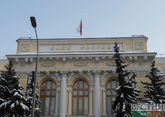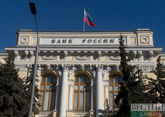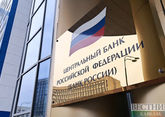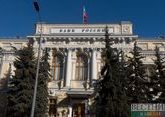The Board of Directors of the Russian Central Bank has kept the key rate at the level of 7.25%.
"The Bank of Russia has reviewed the inflation forecast upwards considering the planned increase of the value added tax in 2019. This measure will influence the next year consumer prices dynamics and may affect this year’s dynamics as well," the regulator said in a press release.
The Bank of Russia forecasts annual inflation of 3.5-4% at the end of 2018 and its short-term increase to 4-4.5% in 2019. The consumer price growth rate will return to 4% in early 2020," according to the press release.
The regulator noted that annual inflation in general corresponds to the Bank of Russia’s expectations. "In April and May, the annual consumer price growth rate remained at the March level totalling 2.4%," according to the press release.
According to the press release, the balance of risks up to the end of 2019 has shifted towards proinflationary risks. In making its key rate decisions the Bank of Russia will assess inflation risks, inflation dynamics and economic developments against the forecast.
The next meeting of the Board of Directors of the Russian Central Bank in 2018 is scheduled for July 27.
The advisor on macroeconomics to the CEO of the 'Opening-Broker' brokerage house, economist Sergey Hestanov, speaking to a correspondent of Vestnik Kavkaza, noted that the Central Bank's decision not to lower the key rate, despite the ultra-low inflation of 2.4%, there are several reasons. "First of all, this is an unusual movement in fuel prices, which, in principle, can increase inflation." Secondly, this is an expected increase in VAT, which is also capable of overtaxing inflation. "Most likely, until the fall, the Central Bank will be able to pause and watch, how the rise in fuel prices affects the value of other goods, "he said.
Sergei Hestanov stressed that the key rate ceased to be an essential tool for regulating the economy. "This is due to the fact that Russian banks do not borrow from the Central Bank actively. For example, banks in the United States and the European Union borrow from their Central Banks very actively, as a consequence, the key rate there is rather important for the economy. But here it does not have a serious impact on the country's economy," the advisor on macroeconomics to the CEO of the 'Opening-Broker' brokerage house said.
The head of the finance, monetary circulation and credit department at RANEPA, Alexander Khandruev, also explained the frozen rate with high inflationary expectations. "An increase in VAT is being prepared in Russia, gasoline prices have risen, transport costs of enterprises will increase, and it is natural that producers will shift some of the costs to prices. It is also important that the US Fed raised its rate to 1.75%-2%, which will lead to the expected weakening of the ruble - the Central Bank decided to indirectly support the exchange rate by maintaining the key rate. The Central Bank also seeks to maintain the attractiveness of ruble deposits and government bonds," he said.
Khandruev drew attention to the fact that the Central Bank could work with a key rate in a different way. "The Central Bank does not necessarily should issue loans at a low rate left and right. For example, the European Central Bank preserves a zero rate, but the loan growth not high in the EU. The key rate is important because it sets the parameters for the calculation of all investment projects. We are actively developing the bond market, and bond yields are very closely related to the key rate. On the other hand, the key rate itself cut does not boost investment activity, other conditions are also needed," the economist concluded.










